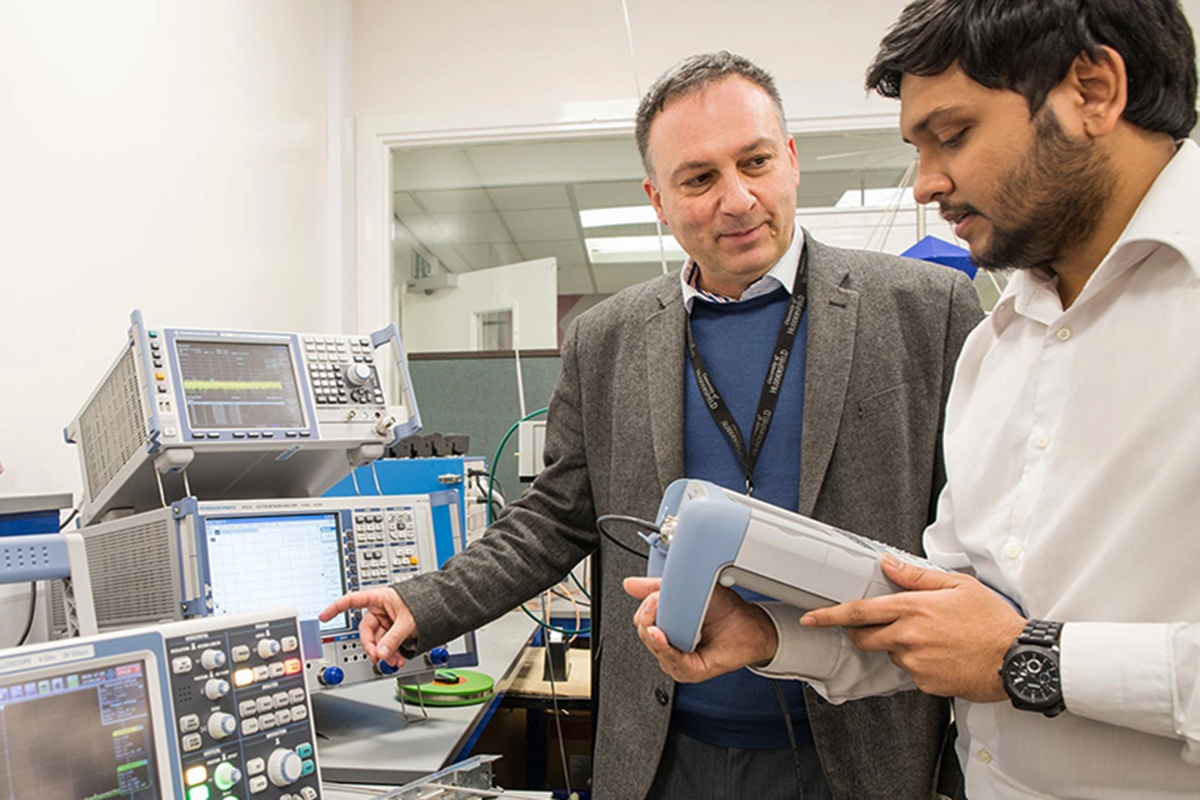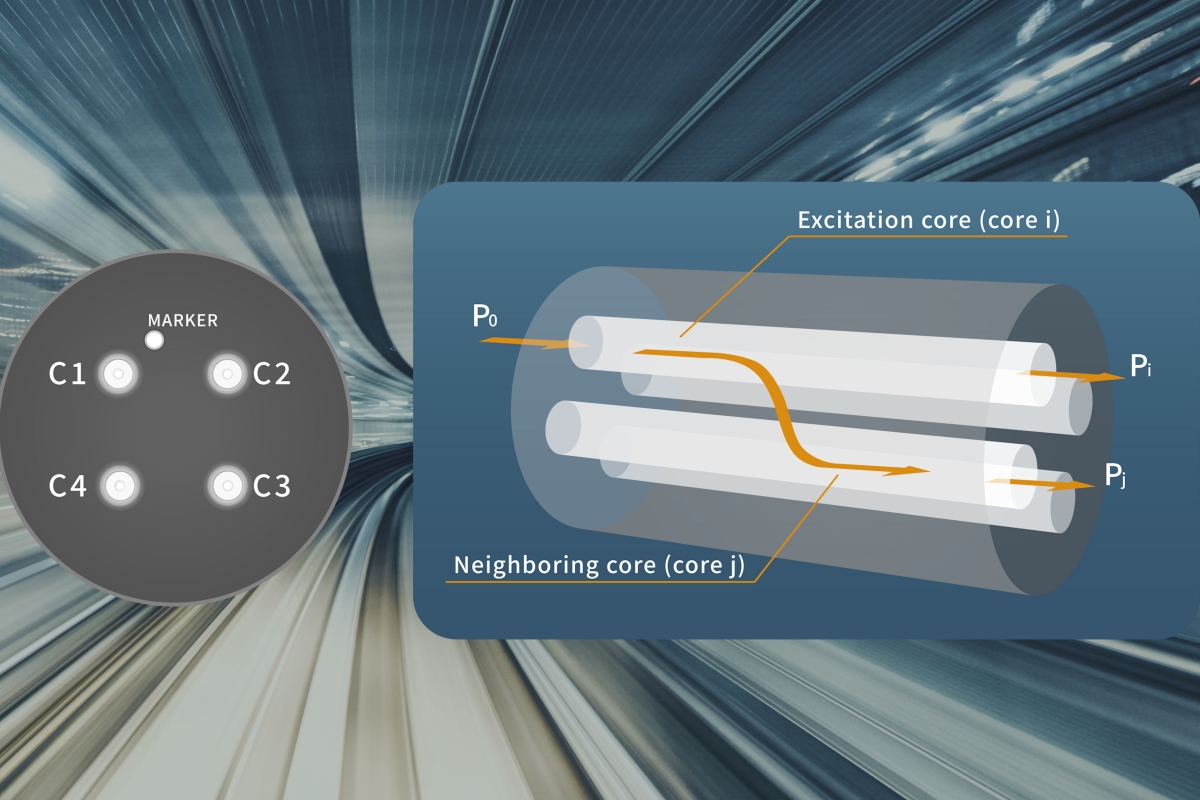Enterprise Network Infrastructure: Design, Performance & Security
Data Centre Infrastructure News & Trends
Enterprise Network Infrastructure: Design, Performance & Security
News
RETN upgrades Lithuanian network ring
RETN, an independent global network services provider, has announced the upgrade of its Lithuanian network ring connecting Vilnius, Kaunas, Klaipėda, Šiauliai, and Panevėžys.
The upgrade enhances regional connectivity within Lithuania by extending high-capacity services across these cities, while maintaining Vilnius and Kaunas as key nodes on RETN’s international backbone linking the Baltics with major European hubs.
Working in partnership with fibre provider Skaidula, and in response to customer demand, RETN deployed 100G DWDM transponders across key regional routes, complementing the existing Nx100G and Nx400G services in Vilnius and Kaunas.
The upgraded segments now operate with 500G of installed capacity and are designed to scale to 1.2Tbps and beyond as demand grows.
The upgraded ring improves access across the Baltic region and provides direct routes to border points with Latvia and Poland, with onward connectivity to Warsaw, Stockholm, Frankfurt, Amsterdam, and other key locations.
"As Lithuania continues to grow as a technology powerhouse, RETN is committed to providing fast, secure, and future-proof connectivity to meet the demands of the region's rapidly evolving IT sector,” comments Timur Pertenava, Commercial Director, Nordic & Baltic at RETN.
“Our upgraded infrastructure is designed to support the growing needs of international carriers, cloud providers, and the thriving local unicorn ecosystem."
This upgrade is part of a broader programme to expand RETN's IP and DWDM backbone across the region to support the growing traffic volumes from Lithuania's IT and data hosting sectors.
For more from RETN, click here.
Joe Peck - 22 July 2025
Data Centre Infrastructure News & Trends
Enterprise Network Infrastructure: Design, Performance & Security
News in Cloud Computing & Data Storage
LINX, Megaport partner to expand cloud connectivity for London
The London Internet Exchange (LINX), an Internet Exchange Point (IXP) operator of digital infrastructure across the UK, Africa, and the United States, has today announced a partnership with global Network as a Service (NaaS) provider Megaport to enhance cloud connectivity options for its members.
This collaboration brings an expansion to the LINX Cloud Connect service, enabling access to a broader suite of cloud platforms including Amazon Web Services (AWS), Google Cloud, Microsoft Azure, Oracle Cloud, and others.
Through this partnership, LINX members in London can now use Megaport’s global infrastructure to connect to cloud service providers directly from their existing multi-service port. This means one invoice, port, and point of contact for engineering support, aiming to streamline operations and reduce complexity for network operators.
“This partnership with Megaport is a significant step forward in our mission to ensure we are best serving our UK members,” says Tyrone Turner, Product Manager at LINX. “Our community now have even more choice and control when it comes to low-latency peering and cloud connectivity, all through a single interface.”
Megaport is a LINX member network and ConneXions Reseller Partner.
“This partnership gives LINX members a faster, simpler path to cloud,” claims Emmanuel Sevray, VP of Sales, EMEA at Megaport. “By combining Megaport’s global infrastructure and broad cloud ecosystem with LINX’s interconnection services, UK networks can connect to leading cloud providers with less complexity, accessing the services they need, when and where they need them.”
LINX Cloud Connect is designed to try to simplify cloud adoption. With Megaport’s integration, the company hopes LINX members will gain greater flexibility and reach, empowering them to build hybrid and multi-cloud environments.
For more from LINX, click here.
Joe Peck - 21 July 2025
Cabling Solutions for Optimised Data Centre Performance
Data Centre Infrastructure News & Trends
Enterprise Network Infrastructure: Design, Performance & Security
AFL launches modular optical fibre platform, DENALI
AFL, a manufacturer of fibre optic cables, connectivity, and equipment, today introduced DENALI, a modular optical fibre platform that is specifically designed for high-growth GPU environments with minimal infrastructure upgrades.
The DENALI platform hopes to position the "facilities of tomorrow" to scale with the increasing complexity and volume of hyperscale and AI workloads.
With its modular design, the DENALI platform is intended to adapt as networks grow, featuring advanced rack-mount hardware, cassettes, and pre-terminated customisable assemblies. The platform delivers up to 288 LC duplex ports (576 fibres) in 4RU of rack space and supports speeds from 10GB to 800GB.
“The market is undergoing a major shift, where AI-driven densification is transforming how data centres approach fibre deployment," says Marc Bolick, President of Product Solutions at AFL.
“The DENALI platform was developed in response to this shift of handling faster scaling, reduced downtime, and solid reliability that AI workloads actually need."
https://www.youtube.com/watch?v=NUsC9fFARRA
Features of the DENALI platform
The platform seeks to "accelerate AI cluster expansions, reduce time-to-market, and drive faster time-to-revenue with stronger ROI on infrastructure builds."
• Simplified deployment process — The platform's design reduces the number of components required for installation, streamlining inventory management and reducing potential points of failure.
• System integration — DENALI is designed for integration with existing infrastructure, aiming to minimise disruption during upgrades and expansions.
• Enhanced fibre management — The platform’s cable management systems hope to reduce maintenance requirements and improve long-term network reliability.
Joe Peck - 17 July 2025
Data Centre Infrastructure News & Trends
Enterprise Network Infrastructure: Design, Performance & Security
News
Teleste and VodafoneZiggo roll out DOCSIS 4.0 broadband
Teleste, a Finnish technology company that provides broadband, security, and information technology, has announced an agreement to supply its 1.8 GHz broadband technology to VodafoneZiggo, a cable broadband operator in the Netherlands, enabling the spectrum capability required for DOCSIS 4.0.
Teleste will supply 1.8 GHz intelligent amplifiers, multitaps, and telemetry solutions to VodafoneZiggo’s nationwide network upgrade. The first phase of deliveries has proceeded successfully in 2025, kicking off a multi-year collaboration aimed at transforming the region’s broadband landscape.
With an area in central Amsterdam already upgraded, this roll out represents Europe’s first major deployment of a 1.8 GHz network in preparation for DOCSIS 4.0.
“This partnership marks an important next step in our renewed strategy focused on improving the customer experience, delivering fast and reliable internet across the Netherlands, and making targeted investments in our network and core activities. We continue to develop to ensure our customers enjoy stable WiFi throughout their homes and simplified internet services,” comments Thomas Helbo, Chief Technology Officer at VodafoneZiggo.
Teleste asserts that with its 1.8 GHz amplifiers, VodafoneZiggo can identify and resolve network issues in real time, minimising service interruptions and "ensuring customers enjoy consistent, high-quality internet."
“VodafoneZiggo’s investment in DOCSIS 4.0 technology, with its 10G promise, exemplifies how cable infrastructure will remain competitive for the next 10+ years. This agreement demonstrates our leadership in 1.8 GHz broadband technology and our commitment to meeting the evolving needs of the market,” claims Ulf Andersson, Head of Teleste’s Broadband Networks business.
“We look forward to working closely with VodafoneZiggo to upgrade their network infrastructure and deliver superior connectivity experiences to subscribers.”
The partnership, according to the companies, marks a milestone in the rollout of 1.8 GHz broadband technology across Europe, and this collaboration "will pave the way for other operators in the region to adopt next-generation DOCSIS 4.0 solutions."
Joe Peck - 15 July 2025
Data Centre Infrastructure News & Trends
Enterprise Network Infrastructure: Design, Performance & Security
Insights into Data Centre Investment & Market Growth
CityFibre agrees £2.3 billion in major new financing round
CityFibre, an independent UK full fibre platform, has reached an agreement with its shareholders and existing lenders on a £2.3 billion financing round, aiming to accelerate its next phase of growth.
The financing includes £500 million in new equity secured from CityFibre shareholders, Infrastructure at Goldman Sachs Alternatives, Antin Infrastructure Partners, Mubadala Investment Company, and Interogo Holding.
CityFibre has also agreed a committed £960 million expansion of its existing debt facilities, supported by lenders including ABN AMRO, BBVA, Crédit Agricole CIB, ING, Intesa Sanpaolo IMI CIB, Lloyds, the National Wealth Fund, NatWest, SEB, and Société Générale. The facility will support CityFibre’s continued network investment and should enable it to connect hundreds of thousands of new customers across its nationwide network.
An accordion facility of £800 million is also being made available to help drive CityFibre’s expansion through the acquisition of full fibre network assets. This facility will be used to finance the company’s M&A pipeline.
Greg Mesch, CEO of CityFibre, comments, “This round of financing will supercharge CityFibre’s next phase of growth as we consolidate the altnet sector, accelerate the pace of customer connections, and unleash the full power of our market-leading 10Gb XGS-PON network for the benefit of all our partners, their customers, and for the UK economy.
“There is huge opportunity ahead for CityFibre and it is [a] testament to the success of the company that we have such strong backing from our lenders and shareholders. This multi-billion-pound investment into critical digital infrastructure will deliver significant benefits across the UK, helping to realise potential and unlocking economic growth.”
This investment marks a significant moment in upgrading the UK’s digital infrastructure. It will deliver world-class infrastructure and services to millions of consumers and businesses and provide the digital foundations for the UK’s economic growth for decades to come.
Rachel Reeves, Chancellor of the Exchequer, says, “Today’s announcement shows Britain is attracting billions of pounds of investment, including through the National Wealth Fund, driving growth across British businesses.
“Investing in our digital infrastructure is key to ensuring our economy is fit for the future. Through our Plan for Change we’re growing the economy by boosting investment in Britain and working hand in hand with businesses to create jobs, to put more money in working people’s pockets.”
Peter Kyle, Secretary of State for Technology, adds, "This investment in CityFibre is welcome news. It's proof our telecoms industry is driving investment into the UK as well as building the digital foundations that will serve generations to come.
“The success of the UK's network providers will help accelerate the rollout of gigabit-capable broadband to millions of homes and businesses across the country. I hope to see even more success stories like this one because this sector is critical not just to improving internet speeds, but to transforming quality of life for communities and creating opportunities in every part of the country as part of our Plan for Change."
Over the past 12 months, CityFibre has announced its first full year of profitability, launched Sky’s full fibre and Gigafast+ services across CityFibre’s nationwide network, completed the integration of Lit Fibre, announced the acquisition of Connexin’s full fibre infrastructure, and reached more than 4.5 million premises with its full fibre network, over half way to CityFibre’s milestone.
For more from CityFibre, click here.
Joe Peck - 14 July 2025
Data Centre Infrastructure News & Trends
Enterprise Network Infrastructure: Design, Performance & Security
News
Uni of Huddersfield academic awarded £450k, funding 6G research
University of Huddersfield academic Professor Pavlos Lazaridis has been awarded a £450,000 grant by the EPSRC (the UKRI Engineering and Physical Sciences Research Council) to fund vital equipment to further his research into future 6G networks.
The core equipment grant will fund three key hi-tech pieces: a 110 GHz vector network analyser, a 43.5 GHz signal generator, and a portable combined 50 GHz VNA and spectrum analyser.
Together, they will seek to improve the University of Huddersfield's research capacity when it comes to higher frequency radio frequency systems that are related to next-generation technologies, including 5G/6G communications, metamaterials, satellite communications, and advanced sensor technologies.
Professor Lazaridis, an expert in electronic and electrical engineering within the School of Computing and Engineering, leads the University’s Systems, Telecommunications, and Antenna Research Group (STAR). The equipment will be used in two ongoing international Horizon Europe projects he is collaborating on - namely ISAC-NEWTON and 6G-ICARUS.
The former involves University of Huddersfield academics being part of a doctoral network training a new generation of experts in 6G networks. It is a Europe-wide project focusing on research into integrated sensing and communications for 6G and involves a total of 17 academic and industrial partners.
The latter is a partnership of 22 organisations across Europe, the US, and Brazil that are investigating and improving on current technologies in order to address obstacles that 6G networks will face and to define the future wireless networks (FWNs).
Professor Lazaridis comments, “These state-of-the-art instruments will tremendously increase our research capabilities and place us in the top of 6G research. We are grateful to the EPSRC.”
The EPSRC, part of UK Research and Innovation (UKRI), is the main funding body for engineering and physical sciences research in the UK. It invests in research and skills to advance knowledge, as well as supporting new ideas and transformative technologies.
UKRI is a public body sponsored by the UK Government’s Department for Science, Innovation, and Technology, designed to foster the research culture needed for research and innovation excellence.
Joe Peck - 11 July 2025
Data Centre Infrastructure News & Trends
Enterprise Network Infrastructure: Design, Performance & Security
News
Gemtek first to achieve prplWare device certification
prpl Foundation member company Gemtek Technologies, a Taiwan-based manufacturer of wireless communication products and broadband systems, becomes the first to deliver prplWare-certified devices.
By achieving the certification, Gemtek has evidenced that their devices will behave as expected by operators and that all applications will run consistently across all their prplWare devices. As a result, operators using Gemtek devices with certified prplWare firmware can manage devices spanning multiple generations and silicon platforms, sourced from various suppliers and running complex applications.
“We are proud to see the first certification with Gemtek of what will be many certified devices in the future,” says Leonard Dauphinee, prpl Foundation President, MaxLinear VP, and CTO Broadband Group. “A device running prplWare provides a well-defined set of APIs and predictable behaviour for both the gateway and the applications that operators intend to run on the gateways they offer to their customers. CPE platforms are now being certified as authentic, fully-featured prplWare.”
“At Gemtek, we are true believers in open standards and open source, as we fully share the vision and values of the prpl Foundation,” states Gemtek CEO James Lee. “By working closely with our broadband silicon partners and providing prplWare-certified devices across multiple SoC platforms to its customers, Gemtek can greatly accelerate time to market for operators.
"As the number of RFPs specifying prpl-certified proposals continues to increase, we are proud to be the first to achieve prplWare device certification supporting acceleration and scalability.
“The first two devices certified are a Multi-WAN Gateway, which supports Wi-Fi7 Tri-Band, XGS-PON/5G NR/10G Ethernet, based on MaxLinear silicon, and a Wi-Fi7 Tri-Band Gateway based on the Qualcomm Dragonwing platform."
“We congratulate Gemtek on delivering the pplWare-certified, carrier-grade OSPv2 platform based on MaxLinear technology,” comments Puneet Sethi, Vice President of MaxLinear’s Network Infrastructure and Carrier Business. “With full Wi-Fi 7 certification, Tri-Band support, and multi-WAN readiness, this platform is primed for operator deployment. We’re proud to see the prpl Foundation ecosystem expanding rapidly and gaining strong traction among MaxLinear’s global customer base.”
The certification follows the official release of the prplWare Certification Program earlier this year, with a standardised test plan and supporting test software on the CDRouter Test Platform from QA Cafe.
“It is a testament to the dedication and hard work of prpl Foundation members, and Gemtek in particular, to get the first devices through the prplWare Certification programme,” concludes Tim Winters, QA Cafe CTO and Chair of the prpl Foundation Testing and Certification Working Group. “We look forward to more and more companies using certification to prove their devices will work the way operators expect and moving the open-source CPE industry forward.”
Joe Peck - 10 July 2025
Data Centre Infrastructure News & Trends
Data Centres
Enterprise Network Infrastructure: Design, Performance & Security
Digital Realty collaborates with Vodafone Greece
Digital Realty, a provider of cloud- and carrier-neutral data centre, colocation, and interconnection systems, has announced a collaboration with Vodafone Greece, a telecommunications, IoT, and 5G connectivity provider, to enhance Crete’s digital infrastructure and connectivity. This collaboration, according to Digital Realty, "underscores both companies’ commitment to fostering Crete’s emergence as a key connectivity hub in the Mediterranean."
As part of this collaboration, Vodafone Greece will establish a point of presence (PoP) at Digital Realty’s HER1 data centre in Heraklion, the first carrier-neutral interconnection point for all cable landing stations in Crete. The facility will host customers’ submarine line terminating equipment, creating a link in the island’s connectivity ecosystem.
Vodafone Greece intends to deploy a dual-route connectivity system between HER1 and its cable landing station in Tympaki in southern Crete to enhance capacity and resilience. These routes will also serve as backhaul services for major subsea cables landing in Crete by connecting to the HER1 data centre.
Connectivity between Chania and Heraklion should also become more robust due to the Vodafone Greece terrestrial network, enhancing the infrastructure for cloud service providers, large enterprises, internet service providers, content delivery networks, and carriers. These developments also supplement Vodafone Greece’s existing connectivity services between Athens and Crete through Chania in the west and Sitia in the east.
“This collaboration with Vodafone Greece marks a transformative moment for Crete’s digital infrastructure,” comments Alexandros Bechrakis, Managing Director of Digital Realty in Greece. “Our HER1 data centre is designed to establish Crete as a strategic digital hub which requires close collaboration with local, regional, and global partners. By supporting critical landing cables and enhancing regional connectivity, we’re reinforcing Crete’s position as a gateway to Southern Europe and beyond. This collaboration with Vodafone Greece reflects our shared commitment to delivering world-class digital services and infrastructure that empower local communities and businesses.”
Nikos Plevris, Chief Network Officer, Vodafone Greece, states, “Our partnership with Digital Realty is another critical step in what we have managed to implement through the construction and operation of our submarine cable landing station in Tympaki, Crete. Having agreements in place on the interconnection for some of the largest subsea fibre optic cables in the world, we connect the country with the rest of the world, bolstering Greece's digital economy and offering new opportunities for our communities, partners, and the entire country. [By] combining our infrastructure in the area with Digital Realty’s, it is certain that we will build something truly impactful, and we are looking forward to seeing the results of this collaboration."
For more from Digital Realty, click here.
Joe Peck - 9 July 2025
Data Centre Infrastructure News & Trends
Enterprise Network Infrastructure: Design, Performance & Security
News
Anritsu, Fujikura confirm equivalent core crosstalk results
Anritsu Corporation, a Japanese multinational corporation manufacturing test and measurement equipment for telecommunications, in collaboration with Fujikura, a Japanese manufacturer of cables and optical fibres, has measured inter-core crosstalk in weakly-coupled multi-core optical fibres using multiple methods and has confirmed that the results are equivalent. Both companies presented their results at the international OptoElectronics and Communications Conference (OECC 2025) in Sapporo, Japan.
With the growing adoption of artificial intelligence (AI) and cloud services, the demand for higher transmission capacity in optical submarine cables and data centre interconnects is rapidly increasing. Today’s optical communications rely on single-mode fibre (SMF) and advanced signal optimisation technologies to achieve high data throughput. However, as the transmission capacity per fibre continues to grow, these technologies are approaching their physical and performance limits.
Consequently, recent R&D has focused on weakly-coupled multi-core optical fibre with multiple independent cores in a single optical fibre. While this type of fibre significantly increases transmission capacity, inter-core crosstalk – caused by interference resulting from light leakage between each core – degrades the quality of transmission. This varies not only due to the optical fibre design and manufacturing, but also depending on the installation conditions, requiring evaluation of inter-core crosstalk in field conditions. Although various companies and research institutions have proposed different methods for measuring inter-core crosstalk, the measured results from each method have not yet been adequately validated.
In the presented comparative evaluation, Anritsu, collaborating with Fujikura, measured inter-core crosstalk using four methods: two using optical power meters, and two using Anritsu's OTDR (Optical Time Domain Reflectometer) for measuring optical fibre loss and reflection. The evaluated four-core weakly-coupled multi-core optical fibre manufactured by Fujikura features a standard cladding diameter of 125 µm. The measured results from each measurement method were all within ±1.0 dB at 1550 nm. Consequently, any of these four measurement methods can be chosen according to the weakly-coupled multi-core optical fibre application scenario, such as R&D, Manufacturing, and Installation and Maintenance (I&M), with assured consistent correlation regardless of which method is used. Furthermore, these results should assist with future standardisation of weakly-coupled multi-core optical fibre.
Anritsu says it will continue to contribute to the practical implementation of next-generation optical communications technology by providing test solutions for weakly-coupled multi-core optical fibres.
Joe Peck - 4 July 2025
Data Centre Infrastructure News & Trends
Enterprise Network Infrastructure: Design, Performance & Security
Products
Arista expands AI-driven campus and branch networking offerings
Arista Networks, a provider of cloud and artificial intelligence (AI) networking systems, has announced several AI-driven enterprise products that deliver an expanded set of switching, Wi-Fi 7 access point, and WAN capabilities. In conjunction, Arista has acquired the VeloCloud SD-WAN portfolio from Broadcom. This combination hopes to bring operational ease through zero touch operations, proactive monitoring, and automated troubleshooting across the broad set of client-to-cloud networking domains.
As organisations seek real-world business value from generative and agentic AI, they are adopting centres of data strategy that connect the algorithms and models to key, distributed data stores across the enterprise - from the data centres to the campus, the branches, and remote offices. Reliable networks that are always on, easy to operate, and with built-in security are, therefore, more important than ever. Arista says it continues to embrace this challenge with "an expanding set of hardware and software solutions optimised for various customer needs."
VeloCloud offers cloud-delivered SD-WAN solutions with integrated security. It comprises of a range of edge hardware platforms, featuring integrated firewalling and application-optimised SD-WAN, available with a choice of integrated Wi-Fi and/or 5G mobile connectivity. This portfolio intends to provide expanded choice and to enable global WAN services to interconnect data centres and distributed campus offices, whilst adding to Arista's existing CloudEOS routing stack and 7000-series WAN routers.
“We have been using Arista and VeloCloud in production environments,” states Alan Davidson, CIO of Broadcom. “The addition of the VeloCloud edge strengthens and scales the enterprise WAN network.”
Arista is also introducing the AWE-7220R WAN router with regional connectivity. Together with the previously announced AWE-7230R and AWE-7250R systems, the company suggests customers can build a hub-spine and VeloCloud micro-edge WAN topology.
Arista's new campus portfolio features PoE capabilities in a compact form factor switch, along with a wider range of Wi-Fi 7 indoor and outdoor access points for branch deployments, enabling newer IoT applications, such as ESL (Electronic Shelf Label).
"We’re thrilled with Arista's access point integration with VusionGroup's Electronic Shelf Labels,” comments Dean Penebacker, IT Director, Pan Pacific Retail Management (PPRM) Hawaii. “This seamless integration with our existing systems means we can manage pricing dynamically and reduce labour costs, all while ensuring accuracy at the shelf edge. It’s the innovative technology we need to stay competitive in today’s retail landscape."
Key additions to the switching and wireless portfolio include:• A new, compact, fanless 12-port PoE switch that is also 60W capable in the 710 family of access switches, designed for remote office and branch deployments.• A new, ruggedised outdoor Wi-Fi 7 access point, the O-435, designed for harsh industrial and outdoor environments, featuring a 2x2 tri-radio and a fourth dedicated tri-band multi-function radio.• A new, entry-level 2x2 tri-radio Wi-Fi 7 indoor access point, the C-400, targeted for high-volume service provider-managed (MSP) branch environments, including SMBs, multi-dwelling units, and small remote offices.
“Arista Networks’ new, compact, fanless switch platform and entry-level Wi-Fi 7 access point are a perfect fit for our clients with small distributed offices and branches,” claims Neil Dearman, CTO EMEA, High Point Solutions. “As a channel partner, we can address the unique needs of our clients with enterprise-grade technology that’s easy to deploy and manage, all while keeping costs in check. It’s a win-win for us and our customers."
Arista CloudVision AGNI (CV AGNI) now supports a fully on-premises deployment model, seeking to enable customers with strict regulatory and data compliance requirements to benefit from scalable AI-driven network access control from large campuses to distributed locations - while the new 1G and 10G virtual ZTX platforms extend Arista MSS identity-based micro-segmentation to remote branches and small campuses.
"For years, we searched for a solution to secure our network and district resources without adding complexity, financial strain, or management challenges,” notes Najeeb Qasimi, Director of IT, Oak Grove School District. “Arista CV AGNI allows us to effortlessly implement and maintain policies, while its secure client connectivity ensures every student, teacher, and device - whether on district-provided or personal equipment - remains protected. This powerful, hassle-free tool has revolutionised how we safeguard and operate our network."
The availability of the products are currently as follows:
• O-435 and C-400 will ship in Q2 2025.• 710XP will ship early Q3 2025.• The AWE-7220R WAN router is shipping now.• On-premises CloudVision AGNI is shipping now.• Arista MSS virtual ZTX appliances are shipping now.
For more from Arista Networks, click here.
Joe Peck - 4 July 2025

Head office & Accounts:
Suite 14, 6-8 Revenge Road, Lordswood
Kent ME5 8UD
T: +44 (0)1634 673163
F: +44 (0)1634 673173









